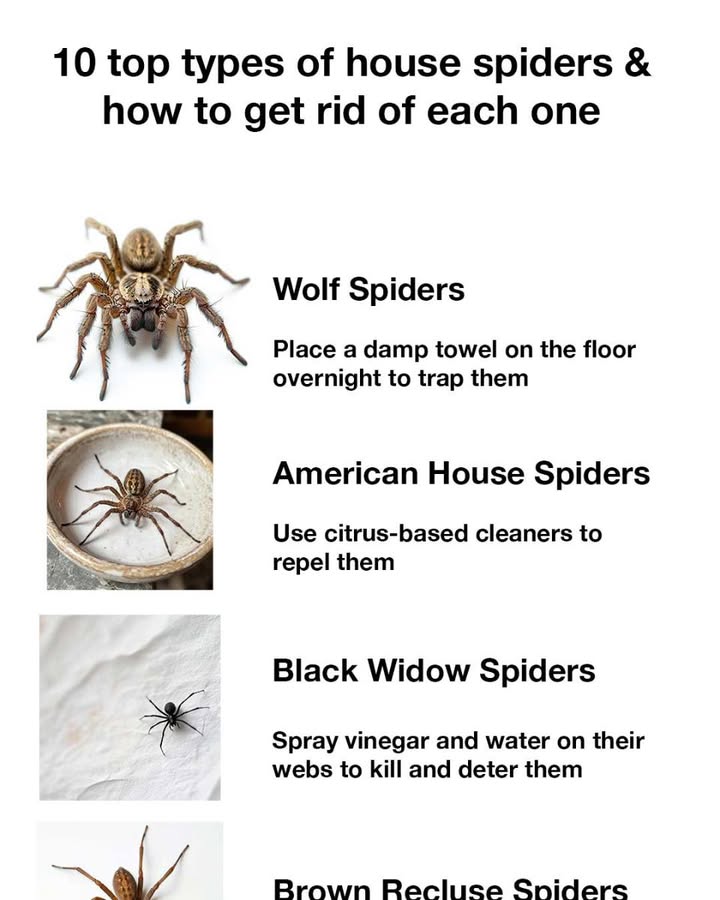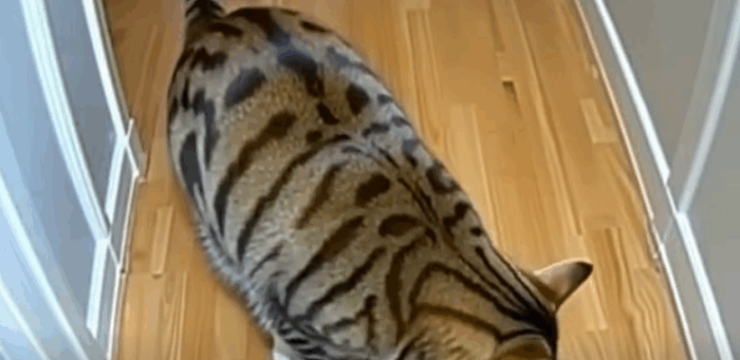Spiders are a regular presence in many homes, frequently seen in corners, basements, attics, or even tucked behind furniture. While most household spiders are harmless, their unexpected appearances can make people uncomfortable. Identifying the types of spiders you encounter is an essential step in managing them effectively. Some species, like the black widow or brown recluse, are venomous and pose health concerns, while others, like cellar spiders, help control pests. Recognizing the spiders in your home enables you to decide whether to remove them, leave them be, or take specific control measures. One of the most recognized types is the wolf spider, known for its large, hairy body and active hunting behavior.
 Rather than spinning webs, they chase down their prey and are typically found in basements, garages, and near windows. Their camouflage coloring helps them stay hidden. To deal with wolf spiders, seal any openings around your home, especially near doors and windows. Using a vacuum to remove them and placing sticky traps in problem areas can also help. Maintaining a clean, uncluttered space is key to reducing their numbers. Another frequent visitor is the American house spider. These small, brown spiders weave messy, tangled webs in quiet corners, often in attics or closets. They’re harmless and can be helpful in managing other insect populations. To reduce their presence, clean and vacuum regularly, especially in undisturbed spaces. Make sure to seal up any cracks where they might sneak in, and minimize clutter to reduce hiding spots. A more serious concern is the black widow spider. With its shiny black body and distinctive red hourglass marking, it’s easy to identify. These spiders prefer dark, undisturbed areas like garages, sheds, or woodpiles. Their bites can be dangerous, requiring cautious removal. Wear gloves when working in places they may inhabit, and use a vacuum or broom to get rid of them. In cases of infestation, spider-specific insecticides may be necessary. Inspect and clean suspected areas often to keep them under control. Similarly, the brown recluse spider is another venomous species that homeowners should be cautious about. These spiders are light to dark brown and feature a violin-shaped mark on their backs. They tend to stay hidden in closets, attics, or storage areas and are known for their reclusive behavior. Their bites can lead to serious medical issues. Reduce clutter, seal cracks, and use sticky traps for detection and control. In regions with high populations, consider hiring a pest control professional. The hobo spider, another brown spider, is medium-sized and often confused with the brown recluse. It features a distinctive herringbone pattern on its abdomen and is found in basements and lower levels. Once considered dangerous, newer research shows hobo spiders are largely harmless to humans. To remove them, seal any cracks in your home’s foundation, vacuum regularly, and use traps. Keeping your home dry and ventilated can discourage them. Jumping spiders are another common type. Though small and compact, they have excellent vision and a unique hopping movement. You’ll usually find them near windows or in sunny spots. They’re not harmful and are even entertaining to watch. You can catch them gently in a cup and release them outside. Cleaning and dusting often can minimize their indoor presence. Consider letting them stay if they’re not bothering anyone, as they eat other pests. The cellar spider, often referred to as a daddy long legs, has long, thin legs and a tiny body. These harmless spiders spin irregular webs in damp, dark places like basements and crawlspaces. Since they prey on other insects, they’re actually beneficial. Use dehumidifiers to reduce moisture, and vacuum regularly to clear away webs. Sealing entry points will help keep new spiders out. If they’re not causing issues, it may be worth letting them stay. The orb-weaver spider is best known for its large, intricate webs, typically found outdoors near lights or gardens. Their colorful, patterned bodies make them easy to spot. Though harmless, their large webs can be a nuisance. Remove webs with a broom or hose, and reduce lighting at night to encourage them to move. They’re useful for pest control, so consider letting them stay in your garden. Sac spiders, pale in color and relatively small, build silk sacs in corners and hidden crevices. Active year-round, they’re hunters rather than web builders.
Rather than spinning webs, they chase down their prey and are typically found in basements, garages, and near windows. Their camouflage coloring helps them stay hidden. To deal with wolf spiders, seal any openings around your home, especially near doors and windows. Using a vacuum to remove them and placing sticky traps in problem areas can also help. Maintaining a clean, uncluttered space is key to reducing their numbers. Another frequent visitor is the American house spider. These small, brown spiders weave messy, tangled webs in quiet corners, often in attics or closets. They’re harmless and can be helpful in managing other insect populations. To reduce their presence, clean and vacuum regularly, especially in undisturbed spaces. Make sure to seal up any cracks where they might sneak in, and minimize clutter to reduce hiding spots. A more serious concern is the black widow spider. With its shiny black body and distinctive red hourglass marking, it’s easy to identify. These spiders prefer dark, undisturbed areas like garages, sheds, or woodpiles. Their bites can be dangerous, requiring cautious removal. Wear gloves when working in places they may inhabit, and use a vacuum or broom to get rid of them. In cases of infestation, spider-specific insecticides may be necessary. Inspect and clean suspected areas often to keep them under control. Similarly, the brown recluse spider is another venomous species that homeowners should be cautious about. These spiders are light to dark brown and feature a violin-shaped mark on their backs. They tend to stay hidden in closets, attics, or storage areas and are known for their reclusive behavior. Their bites can lead to serious medical issues. Reduce clutter, seal cracks, and use sticky traps for detection and control. In regions with high populations, consider hiring a pest control professional. The hobo spider, another brown spider, is medium-sized and often confused with the brown recluse. It features a distinctive herringbone pattern on its abdomen and is found in basements and lower levels. Once considered dangerous, newer research shows hobo spiders are largely harmless to humans. To remove them, seal any cracks in your home’s foundation, vacuum regularly, and use traps. Keeping your home dry and ventilated can discourage them. Jumping spiders are another common type. Though small and compact, they have excellent vision and a unique hopping movement. You’ll usually find them near windows or in sunny spots. They’re not harmful and are even entertaining to watch. You can catch them gently in a cup and release them outside. Cleaning and dusting often can minimize their indoor presence. Consider letting them stay if they’re not bothering anyone, as they eat other pests. The cellar spider, often referred to as a daddy long legs, has long, thin legs and a tiny body. These harmless spiders spin irregular webs in damp, dark places like basements and crawlspaces. Since they prey on other insects, they’re actually beneficial. Use dehumidifiers to reduce moisture, and vacuum regularly to clear away webs. Sealing entry points will help keep new spiders out. If they’re not causing issues, it may be worth letting them stay. The orb-weaver spider is best known for its large, intricate webs, typically found outdoors near lights or gardens. Their colorful, patterned bodies make them easy to spot. Though harmless, their large webs can be a nuisance. Remove webs with a broom or hose, and reduce lighting at night to encourage them to move. They’re useful for pest control, so consider letting them stay in your garden. Sac spiders, pale in color and relatively small, build silk sacs in corners and hidden crevices. Active year-round, they’re hunters rather than web builders.
Though their bites can be irritating, they aren’t medically dangerous. To manage them, vacuum their hiding places, reduce clutter, and seal gaps in walls or foundations. In areas with high populations, an insecticide may be helpful. Finally, funnel web spiders make funnel-shaped webs in quiet, rarely disturbed spaces like attics or basements. Brown or gray in color, they can also be found outdoors. Though not dangerous, their presence can be off-putting. Use a vacuum or broom to remove webs and spiders. Seal off access points and keep areas clean and clutter-free. Outdoors, reduce vegetation and remove debris to limit hiding places. In summary, keeping your home spider-free starts with understanding which species are inside. Regular cleaning, sealing potential entryways, and reducing clutter are simple yet effective steps. While many house spiders are harmless and even helpful in keeping other pests at bay, some may require removal due to potential health risks or personal discomfort. With informed strategies and preventive habits, you can manage spider populations and enjoy a more comfortable living space.





